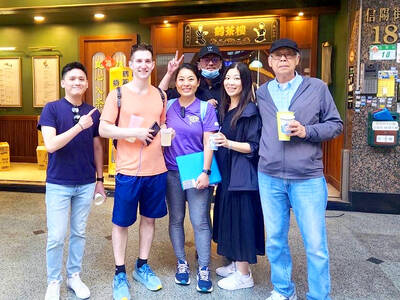Less than a week after a South Korean team announced a major breakthrough in stem-cell research, American rivals may have already gone one better, the British magazine <
The South Korean technique "could already be obsolete," the British weekly reported, cautioning however that the US claim has yet to be confirmed.
The South Korean team won high praise but also ignited controversy when they unveiled their method for cloning embryonic stem cells, the primitive "master cells" that are at the forefront of medical research.
The hope is that, one day, stem cells can be coaxed into growing into specific cells to help replenish dead or damaged tissue in the brain, liver, skin, retina and other organs.
To overcome rejection by the patient, the goal is to take an embryonic stem-cell and reprogram it using the patient's own DNA -- to make a clone.
But the cloned cells would not be allowed to grow into a baby. Instead, after a few days, they would be harvested and allowed to develop into duplicating lines of stem cells --
a key phase in the attempt to get
them to "differentiate" into specific cells.
The main achievement of the South Koreans, led by Seoul National University professor Woo Suk Hwang, was the success rate in getting a very high number of cloned stem-cell lines out of the donated eggs used to get the embryo.
a simpler method
Now, according to New Scientist, a team headed by Yuri Verlinsky of the Reproductive Genetics Institute in Chicago claims to have made patient-matched human stem cells far more simply and without having to use therapeutic cloning.
Verlinsky has patented his technique and details of it are sketchy, according to the report, which appeared in yesterday's issue.
He first removes the programming core, or nucleus, of existing embryonic stem cells, apparently by placing the cells in a centrifuge and spinning them until the denser nucleus is forced out.
The enucleated egg is then "fused" with cells taken from adults.
The idea is that the stem cell's cytoplasm -- the part of the cell that is responsible for cell functions -- reprograms the donor nuclei, turning the fused cell into an embryonic stem cell, but one that is genetically identical to the adult donor.
tentative success
Verlinsky claims to have created 10 lines of embryonic stem cells using this so-called "stembrid" method.
But so far he has only outlined his research at a medical conference in London, not submitted it to a peer-reviewed publication, and many experts are skeptical, New Scientist said.
They demand to see evidence that Verlinsky's "stembrids" are an exact genetic copy of the donor. Even the tiniest genetic flaws could have enormous repercussions.
"Verlinsky's method would have huge advantages if it really does work," New Scientist said.
It would bypass the need to acquire large numbers of fresh human eggs for human cloning, a challenge that is both expensive and in some countries impossible on legal grounds.
And it would also dampen ethical objections, as scientists could use existing lines of embryonic stem cells and not create any more embryos.
The South Korean announcement unleashed objections from some groups that it marked a dangerous step towards reproductive cloning -- the deliberate creation of duplicate children.

A vaccine to fight dementia? It turns out there may already be one — shots that prevent painful shingles also appear to protect aging brains. A new study found shingles vaccination cut older adults’ risk of developing dementia over the next seven years by 20 percent. The research, published Wednesday in the journal Nature, is part of growing understanding about how many factors influence brain health as we age — and what we can do about it. “It’s a very robust finding,” said lead researcher Pascal Geldsetzer of Stanford University. And “women seem to benefit more,” important as they’re at higher risk of

Eric Finkelstein is a world record junkie. The American’s Guinness World Records include the largest flag mosaic made from table tennis balls, the longest table tennis serve and eating at the most Michelin-starred restaurants in 24 hours in New York. Many would probably share the opinion of Finkelstein’s sister when talking about his records: “You’re a lunatic.” But that’s not stopping him from his next big feat, and this time he is teaming up with his wife, Taiwanese native Jackie Cheng (鄭佳祺): visit and purchase a

April 7 to April 13 After spending over two years with the Republic of China (ROC) Army, A-Mei (阿美) boarded a ship in April 1947 bound for Taiwan. But instead of walking on board with his comrades, his roughly 5-tonne body was lifted using a cargo net. He wasn’t the only elephant; A-Lan (阿蘭) and A-Pei (阿沛) were also on board. The trio had been through hell since they’d been captured by the Japanese Army in Myanmar to transport supplies during World War II. The pachyderms were seized by the ROC New 1st Army’s 30th Division in January 1945, serving

The People’s Republic of China (PRC) last week offered us a glimpse of the violence it plans against Taiwan, with two days of blockade drills conducted around the nation and live-fire exercises not far away in the East China Sea. The PRC said it had practiced hitting “simulated targets of key ports and energy facilities.” Taiwan confirmed on Thursday that PRC Coast Guard ships were directed by the its Eastern Theater Command, meaning that they are assumed to be military assets in a confrontation. Because of this, the number of assets available to the PRC navy is far, far bigger